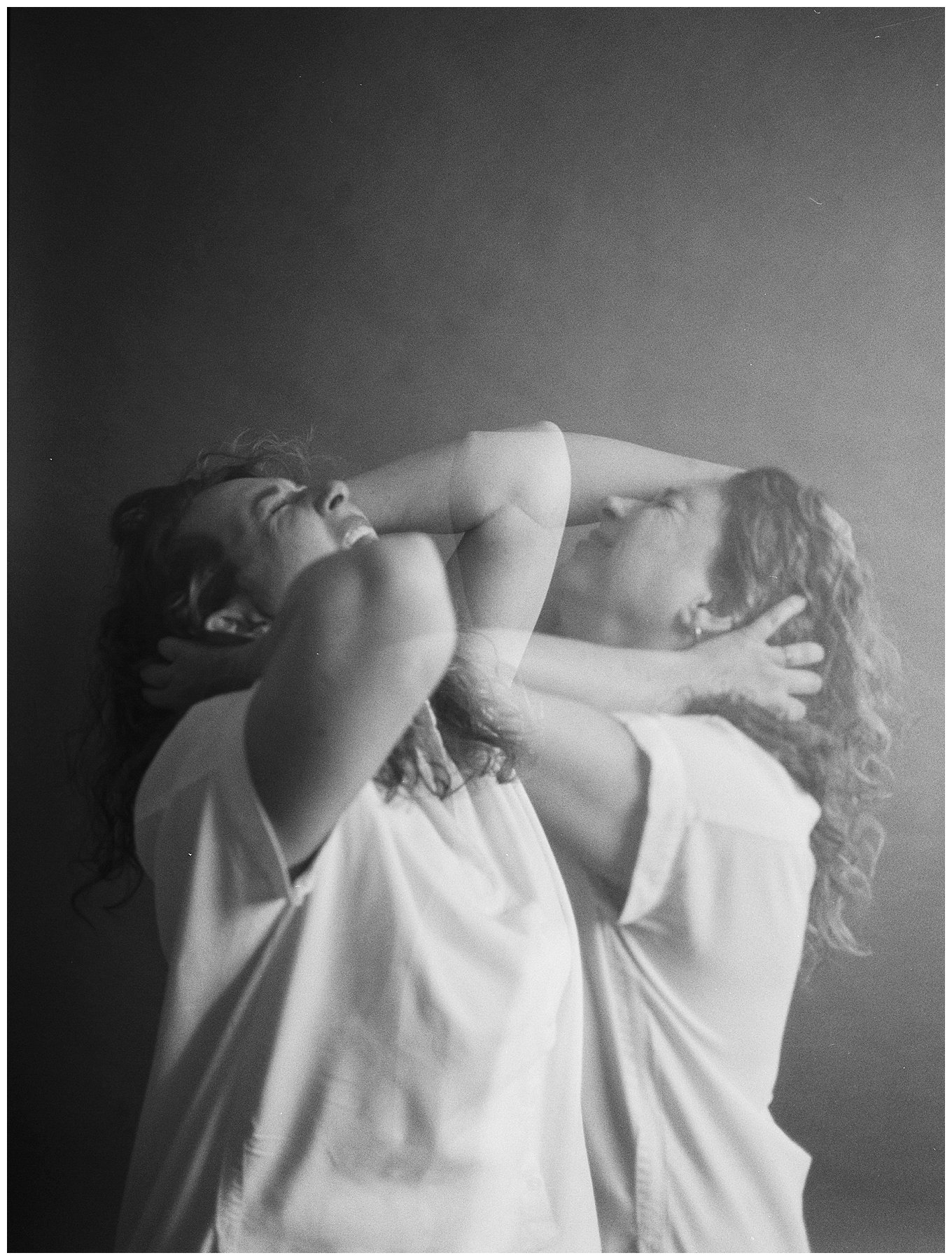Creating Double Exposures with the Pentax 645N | Alison Hatch Photo
In the world of analog photography, there's something truly magical about the art of double exposures. Combining two separate images into a single frame can result in stunning and surreal visuals that transcend reality. And when it comes to creating double exposures, few setups rival the creative potential of the Pentax 645N paired with the legendary T-MAX 400 film.
The Pentax 645N: A Tool of CreativityFirst things first, let's talk about the Pentax 645N. This medium format film camera is a powerhouse of creativity, boasting a spacious 6x4.5cm frame that provides ample room for experimentation. This favorite camera of mine allows for focus on my vision without getting bogged down by technicalities.
One of the standout features of the Pentax 645N is its multiple exposure capability. By simply selecting the multiple exposure mode (a little toggle switch on the left side of the camera) and snapping away, you can seamlessly blend two or more images onto a single frame, unlocking a world of artistic possibilities.
T-MAX 400: The Perfect Film Stock for DoublesNow, let's talk about the canvas for our double exposure masterpiece: T-MAX 400 film. Renowned for its fine grain and exceptional sharpness, T-MAX 400 is a favorite among photographers who crave detail and depth in their images. Whether shooting portraits, landscapes, or abstract compositions, T-MAX 400 delivers stunning results with rich tonality and superb contrast.
But what makes T-MAX 400 truly special for double exposures is its versatility. With its wide exposure latitude and forgiving nature, this film stock allows photographers to push the boundaries of creativity without fear of overexposure or underexposure. Whether you're shooting outside in bright light or indoors with less, T-MAX 400 rises to the occasion, ensuring consistent results with every frame.
Creating Double Exposures: A Step-By-Step GuideNow that we have our tools ready, let's dive into the process of creating double exposures with the Pentax 645N and T-MAX 400 film:
1. Compose Your First Shot: Start by composing your first image, keeping in mind how it will blend with the second exposure. Whether you're capturing a portrait, a landscape, or an abstract pattern, think about the visual elements you want to emphasize and how they will interact with the second exposure.
2. Enable Multiple Exposure Mode: Once you've captured your first image, engage the multiple exposure mode on your Pentax 645N. This mode allows you to take multiple exposures on a single frame without advancing the film, ensuring seamless blending between shots.
3. Capture Your Second Shot: With multiple exposure mode enabled, capture your second image, paying attention to how it complements the first exposure. Experiment with different compositions, angles, and focal points to create dynamic and visually engaging double exposures.
4. Repeat and Experiment: Don't be afraid to experiment with different combinations of images and exposures. The beauty of double exposures lies in their unpredictability, so embrace the unexpected and let your creativity run wild.
Conclusion: Unlocking Creativity with the Pentax 645N and T-MAX 400**
In the hands of a skilled photographer, the Pentax 645N and T-MAX 400 film are a match made in analog heaven. Together, they offer endless opportunities for artistic expression, allowing photographers to push the boundaries of creativity and capture moments of magic that transcend reality. So grab your camera, load up some T-MAX 400, and let the double exposures begin!
Alison is an award-winning Albuquerque, NM analog film photographer and photography educator. Her work has been featured in many online publications such as Shoot It With Film and Heartful Magazine, social media features, and published works like The Front Steps Project Book.



